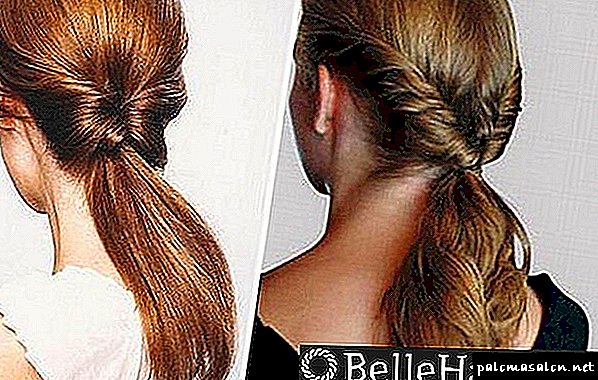The reason for the appearance of lice is the ingress of insects or their eggs (nits) on the hairy areas of a healthy person from a patient with lice (from the Latin “pediculosis” - lice). Blood-sucking insects cause discomfort, allergic reactions, skin lesions. Lice are carriers of dangerous diseases. Pediculosis is a satellite of wars and catastrophes.
What are dangerous lice for children
The disease often occurs in children. This happens in kindergarten, at school, in other places where children are crowded. An infected mother, older sisters and brothers in the family can transmit blood-sucking parasites even to a newborn baby. Pediculosis causes negative reactions in the child’s body, including:
- sleep disturbance
- reduced concentration
- excessive anxiety
- violation of the integrity of the skin and the appearance of purulent wounds.
School-age children are prevented from learning. They become scattered, capricious, complaining of severe itching and dizziness. Unpleasant symptoms persist for about 3 days even after complete destruction of the lice. In sensitive children, pediculosis provokes the development of pathological fears:
- entomophobia - insect fear,
- parasitophobia - fear of parasites.
Babies who have been treated for lice develop panic attacks. They get the feeling that insects are crawling on their skin. The body of younger preschoolers reacts to the presence of bloodsuckers by fever, nausea, and inflammation of the lymph nodes. The waste products of lice cause severe allergic reactions that appear on the skin.
The danger of pediculosis for adults
Pediculosis does not pass without a trace in adults, although it is less common. Lice bites cause severe itching, leading to scratching of the skin and the appearance of open wounds. This is the entrance gate for infections, this is the danger of the disease. Nits stick hair. In some cases, you have to cut your hair short to get rid of insect eggs. The effects of pediculosis in adults are as follows:
- Coarsening of the skin. Lice injects a substance that prevents blood from clotting. Numerous bites in the same place cause excessive accumulation of derma melanin pigment. The affected skin area changes color, coarsens, flakes. In the wound begins a strong inflammatory process, suppuration. When combing and breaking the crust, liquid discharge entangles the hair, and lesions of the dermis at the site of the bite become weeping.
- Allergy, dermatitis, eczema, purulent inflammation, folliculitis (damage to the hair follicles). The waste products of lice get on the skin and cause severe itching. In the absence of treatment of pediculosis infection of scratching on the skin occurs.
- Conjunctivitis. Inflammation of the mucous membrane of the eye causes a pubic louse that can settle in the eyebrows. Other types of blood-sucking parasites do not cause such a complication.
A person infected with lice can not lead a normal life, he must be isolated during treatment. Insects live even on clean hair, no one is immune from infection. A clothes louse causes severe itching at night, due to which a person cannot fall asleep. Insects, parasitic on the head, cause discomfort after washing the hair. Infection occurs during long trips in the bus train, in crowded places (markets, swimming pools, saunas, concerts, rallies).
What diseases carry lice
Until the middle of the 20th century, epidemics of deadly infectious diseases carried by lice killed millions of people. This was due to poor living conditions, insufficient arsenal of antibiotics, large-scale wars, economic crises. Lice are carriers of the following dangerous diseases:
- typhus (syphonic and reverse),
- tularemia,
- Volyn fever.
These diseases are now extremely rare. Epidemics are fixed mainly in developing countries. It is necessary to distinguish between diseases that cause lice to cause pathogens and insect bites. For example, streptococcal infection with head lice develops due to scratching the wounds with dirty hands. Diseases such as viral hepatitis or AIDS, lice can not tolerate.
Risk groups
Parasites are most at risk from those who are in close contact with many other people or their personal belongings. Among them are military men in barracks, refugees, whole regions with armed conflicts, hairdressers, laundry workers and bathhouses.
The risk zone also includes homeless people, people who have promiscuous sex or are serving time in prison.
Head lice
Head louse is easily transmitted at any contact, not even close and in normal sanitary conditions. Argued that they live only on unscrupulous people, for example, the homeless, but it is not. Lice just do not like dirty untidy hair, they give only clean.
The chance to pick up bad parasites is at all without exception. You can get infected 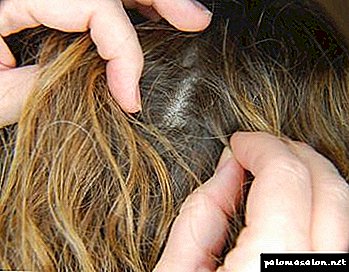 crowded places: in transport, hospital, schools and gardens. Small insects quickly run from one body to another, especially through close contact. There is a high risk of infection for those who use other people's hairbrushes and towels. Once on the head, parasitic insects begin to multiply very quickly.
crowded places: in transport, hospital, schools and gardens. Small insects quickly run from one body to another, especially through close contact. There is a high risk of infection for those who use other people's hairbrushes and towels. Once on the head, parasitic insects begin to multiply very quickly.
If ectoparasites are not infected with pathogens, then pediculosis itself is not life threatening, but it causes discomfort to the host. Sores and red pimples appear in the places of bites, because the pest introduces the secret of salivary glands, which causes burning and itching, and sometimes a rise in temperature.
When there is a high degree of infection, the skin begins to be scratched, which can lead to dermatitis, the infection can enter the bloodstream, causing pustular inflammation.
Lice feed on blood, inflicting multiple bites. In one day, one insect can make 4-5 bites, and if there are several dozen of them on the head, then you can get it every day. up to a hundred bites and more. Pediculosis itself is only part of the problem. Severe diseases spread by head lice can even be deadly. Insects carry pathogens that previously could lead to huge mass epidemics.
Phyriasis (pubic pediculosis)
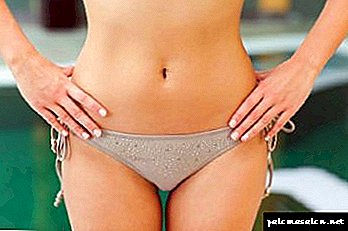 Bites from pubic lice cause intense itching, and they can also be carriers of genital infections with promiscuous sexual relationships. Infection can be obtained through dirty alien bedding or other personal items. In everyday contact, lice enter the armpits, eyebrows, eyelashes, and then quickly spread to other areas of the body.
Bites from pubic lice cause intense itching, and they can also be carriers of genital infections with promiscuous sexual relationships. Infection can be obtained through dirty alien bedding or other personal items. In everyday contact, lice enter the armpits, eyebrows, eyelashes, and then quickly spread to other areas of the body.
Due to pest bites and scratching, complications such as pustular skin diseases can occur, and then the infection begins to travel to the lymph nodes, fatty tissue, boils, abscesses. If the body is weakened, the virus enters the bloodstream and infection begins. In this case, no serious surgical interventions can not do.
Ways of infection with phthyriasis:
- visiting public places, baths, saunas,
- the use of foreign clothing, towels, bed linen,
- contact with the patient's skin,
- sexual intercourse with an infected partner.
Microdiagnosis of the skin serves as a gateway for infections through which chlamydia, syphilis and gonorrhea viruses can penetrate. If such signs appear, seek medical advice immediately. Diagnostics at an early stage, adherence to the rules of hygiene, treatment of oneself and the sexual partner guarantee deliverance from parasitic insects and prevent their reappearance.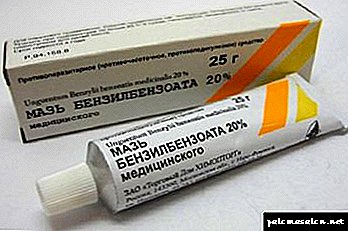
To eliminate the disease and solve the problem, there are a number of effective means that can destroy the bodies of adults and their eggs. Before starting the procedure, you should carefully shave the pubic area. After that, apply the ointment with benzyl benzoate. Antiparasitic effect has sulfuric or gray-mercury ointment. The tool is rubbed on the affected areas daily for 14 days. You can use drugs in spray forms, for example, Spray-Pax aerosol, as well as Nittifor solution or Medifox emulsion.
Complete disinfection must be subjected to beds, chairs, carpets. Bed linen and clothing should be placed in a container with soda solution, boiled, dried and ironed thoroughly with a hot iron. If things cannot be washed, they can be left for 2 weeks without access to air by placing them in plastic bags. Observing regular hygienic procedures and changing clean linen with thorough ironing of all seams, development of phthyriasis can be avoided.
Popular myths about lice diseases
Among the people there is a perception that insect bloodsuckers can be carriers of pathogens of hepatitis and AIDS. It is a myth, ectoparasites do not transmit such serious diseases to people. They are caused by viruses that damage the cells of the immune system or the liver. Getting with the blood of an infected person in the gastrointestinal tract of the blood-sucking, the virus particles are quickly broken down by the enzymes of the parasites.
In the mouth of lice, viruses also do not persist for a long time and are washed away by insect saliva. If it crawls on the body of another healthy person, it will not be a carrier of the virus. Any pathogens of these viruses are not associated with skin insects and are not spread by them. They can only transmit those diseases that are associated with lice themselves and suffer from typhoid and similar diseases.
A good guarantee of safety from infections transmitted by parasites is the prevention of the appearance of the lice themselves. You should avoid places with unsanitary conditions, large crowds of people, casual relationships with strangers, do not use other people's things. Not giving a parasitic insect a chance to get on your head, you can avoid infection by infections.
Dangerous lice: where the problem lies
Louse, like an insect, is not considered dangerous. It is not poisonous, does not do extensive prokus. From this point of view, ectoparasite is a threat of mass. Reproduction of lice occurs quickly, transfer from outsiders is easy. To infect a close enough hair contact (any public place).
Having settled on a new "victim", the louse quickly masters the territory. The processes of nutrition, procreation begin. Insect bite is recognized as painless. A small louse makes a compact puncture with needles in the mouth, gently sucks blood from the wound according to the pump principle.
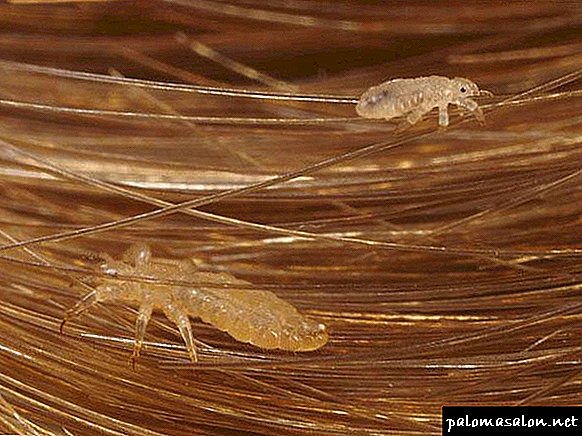
The main trouble lies precisely in the process of feeding. The puncture of the skin is accompanied by the release of an enzyme with allergenic properties. The substance causes itching, inflammation. The increase in the number of procuses provokes an increase in anxiety. Itchy places are scratched, wounds appear, which are the “gateway for infection”.
Gradually combing merge, forming crusts, suppuration. There is dermatitis, eczema, coarsening of the skin, deterioration in the quality of hair. People with increased risk of serious allergic reactions. Detection of parasites often leads to various nervous disorders.
In addition to the "banal" effects lice bite is fraught with serious diseases:
- relapsing fever,
- typhus,
- quintan,
- tularemia.
The infection carries ectoparasite. Infection occurs through a bite (through an open wound, the danger falls with the products of lice). The pubic species is able to carry infectious diseases of the genital sphere.
Attention! It is a mistaken belief that head lice are distributors of AIDS. The virus can be transmitted through open wounds between people. Lice only create favorable conditions for distribution.
Besides the direct transmission of disease, parasites can provoke all sorts of psychosomatic disorders (anxiety, sleep disturbance, deterioration of concentration). This is due to the manifestation of tangible symptoms, awareness of the presence of "outsiders".
On the prevention of pediculosis, you can read on our website.
Relapsing fever
 Disease caused by the introduction of spirochetes into the blood. Head and body lice are carriers of epidemic recurrent typhoid fever, known for having a strong fever with periods of remission.
Disease caused by the introduction of spirochetes into the blood. Head and body lice are carriers of epidemic recurrent typhoid fever, known for having a strong fever with periods of remission.
The ability to spread the disease in the insect appears after living on the body infected with the disease. Carriage is preserved throughout the life of an ectoparasite.
Borrelia reproduces well in the ectoparasite hemolymph. Human infection occurs when open wounds are combed, and an insect is crushed. The waste products of lice with microorganisms enter the body (blood). Borrelia settle down, causing disease.
Microorganisms are introduced into the lymph, strongly multiply. Then, Borrelia returns to the bloodstream. Here is an internal struggle with the "alien", forming endotoxin. The substance disrupts the circulatory and nervous systems. Appear:
- fever with fever, headache, nausea, vomiting,
- disruption of the liver, spleen (externally manifested by rashes on the skin, yellowness),
- disorders of the heart, lungs,
- hemorrhagic heart attacks.
The immune system of the body produces antibodies to microorganisms, gradually destroying them. therefore the course of the disease is characterized by alternating bright flashes of symptoms with remission. The transferred disease does not form a stable immunity.
Outbreaks of the disease are now rare. The greatest risk of occurrence is in the territory of Africa, Asia. There are vaccinations against typhus. Prevention of the disease will be the relief of the spread of parasites.
Typhus
 This type of typhoid occurs when rickettsia is introduced. Vector carriers are ward, at least - head lice. The infection penetrates through skin lesions, the bloodsucker bite itself is not considered dangerous.
This type of typhoid occurs when rickettsia is introduced. Vector carriers are ward, at least - head lice. The infection penetrates through skin lesions, the bloodsucker bite itself is not considered dangerous.
The source of infection are insect feces, which are a temporary shelter of bacteria. Lice, biting infected, become carriers of rickettsia.
The pattern of infection, the course of the disease is similar to that inherent in relapsing fever. Penetrating into the bloodstream, rickettsia infect endothelial cells, causing warty endocarditis. The affected vessel is partially or completely closed by a thrombus.
The most common changes in the vessels of the central nervous system (meningoencephalitis). Skin lesion (rash), mucous membranes occurs.
The disease is characterized by a long incubation period (10-14 days). Symptoms are sudden. Typical manifestations:
- chills,
- fever,
- obsessive headache
- clouding of consciousness.
The danger of the disease lies in a wide range of complications. The basis of their constitutes a sustainable violation of the vessels. The manifestation often occurs after recovery.
The transferred disease forms immunity, but rickettsiae remain in the body. With excessive weakening of the immune system, the disease resumes with less pronounced manifestations. When lumpiness occurs, even a “sluggish carrier” of the bacteria easily transmits the disease.
Quintan
 Vector carrier fever recognize ward look bloodsucker. Pathogens are transmitted through saliva, insect feces. The disease occurs when bacteria enter the blood. The course of the disease is a recurrent pattern (wave-like: aggravation, remission).
Vector carrier fever recognize ward look bloodsucker. Pathogens are transmitted through saliva, insect feces. The disease occurs when bacteria enter the blood. The course of the disease is a recurrent pattern (wave-like: aggravation, remission).
The incubation period is 7-17 days. Fever, severe chills, pain in the eyes, joints, weakness begin suddenly. On the body, limbs, a rash of papular nature is noticeable. Malfunctions of the heart, blood vessels are noted, the liver and spleen are enlarged.
Recovery occurs as unexpectedly as the onset of symptoms. Lethal outcomes are not recorded.
Note! Now the disease does not have a massive spread, occurs among disadvantaged citizens: beggars, drug addicts. Most often, cases recorded in Africa.
 Animals (small rodents) are recognized as the main carrier of the disease. Blood-sucking insects are also able to spread the infection.
Animals (small rodents) are recognized as the main carrier of the disease. Blood-sucking insects are also able to spread the infection.
The course of the disease is accompanied by changes in the lymph nodes, intoxication, skin rash, fever, dizziness. In external manifestations, the disease is similar to the plague.
Outbreaks occur in favorable areas because the bacteria are resistant to various external conditions and persist for a long time in soil and water. The disease is easily treatable, but requires close attention.
Prolonged danger: chronic lice
The increased risk of lice is hidden in the chronic course of the disease. With prolonged absence of treatment, the skin becomes coarse, covered with scabies. Numerous bites of a large number of parasites are joined together, acquiring a solid brown shade.
Chronic course implies the presence of different types of blood-sucking on the host. The body adapts to the manifestations, ceases to respond to itching. Chronic pediculosis is characteristic of people living in adverse conditions.
Lack of proper treatment (poor-quality treatment), repeated infections exacerbated the problem. Significantly increases the risk of serious diseases. Chronic pediculosis continues until the insect population (including dry nits) is completely eliminated, the threat of a new infection, and manifestations are stopped.
The best prevention of pediculosis, associated diseases is called hygiene, restriction of close contacts with outsiders, timely diagnosis. Only in this case it is not necessary to think about more serious diseases. Then to understand whether lice are dangerous will be meaningless.
Effective methods and means against lice and nits:
Useful videos
Pediculosis. How to get rid of lice.
Lice. Causes and treatment.
What diseases carry human lice, and how are they dangerous to health?
Lice - one of the most common and harmful parasites of the human body. Not only does the forced neighborhood of a person with these insects bring serious discomfort, there is a health risk: the louse feeds on blood and can cause pathogens or cause other negative reactions. In this article we will tell you what the health of the blood suckers population threatens, what kind of diseases you can get from lice.
Brief information about human lice
In humans, only a few species of lice can parasitize, able to feed on human blood, get energy from it for life and reproduction. Among them stand out:

Each of these species has its own characteristics in biology, forms, size. The main difference in the environment, habitat location: head lice live only on the hair, beard, mustache or sideburns, ward clothes live on clothes that people often wear, pubic - close to intimate places, armpits.
For any variety of arthropods, it is important to have hair or (for body lice) fibers of the fabric - they can only move on this kind of surface, here they leave eggs (nits). Also, parasites need a constant source of food - they often drink blood, returning to the donor's skin several times a day. Without this, they quickly die.
More information about existing types of lice, dangerous to humans, can be found in the article: "Human lice-parasites: types of insects, their characteristics and appearance."
Every person currently living in urban agglomerations and rural areas runs the risk of contracting these arthropods. Many people believe that this problem is long gone, but research by scientists and statistics of medical institutions suggests the opposite: parasites feel at ease even in countries with a good level of medicine and sanitary-epidemiological conditions.
There are several conditions under which the risk of infection with bloodsuckers is increased. Every person needs to be aware of this in order to minimize the chance of lice appearing in their hair. Detailed information about this is contained in the material: “Development of pediculosis: when lice infestation occurs, what should be considered and how to protect yourself?”
Some people are frivolous about this issue, referring to the fact that at the moment there are a lot of effective medicines for these insects, and if they appear, you can quickly use a suitable drug or a folk remedy.
However, it is necessary to take into account that it is difficult to determine the presence of parasites because of their small size and secrecy, and they develop serious activity when they increase the population in the hair and set off many nits. During this time, lice can make life unbearable, weaken immunity, health, and infect dangerous diseases. Therefore, the best way to protect yourself is to prevent them from appearing on your body, knowing the possible dangers.
The main effects of pediculosis

Pediculosis (lice) is manifested by a number of symptoms that are unpleasant and dangerous in their own right, in some cases can cause complications. These manifestations are especially dangerous for children who are in the main risk group in front of these blood-sicking beings: the children's organism does not have strong immune protection.
Lice feed on blood, their mouth apparatus looks like a mosquito: insects pierce the top layer of skin, get to the capillary and suck the nutrient fluid. At this time, the louse injects a special enzyme that prevents blood from clotting - it irritates the skin.
- Bites lead to irritated areas, redness. In addition, these places itch, and scratching only worsens the situation.
- From multiple bites, the skin begins to peel off, ulcers form, especially when combing, dandruff appears in the hair.
- Ugly bluish spots can appear (most often on the abdomen), dermatitis develops.
- Infections causing inflammation can get into the wounds - this is how pustules are formed.
- Malicious microorganisms, getting into the body, lead to inflammation of the lymph nodes, the appearance of noticeable and painful swelling on the body.
- If left untreated, boils, abscesses occur on the skin. In some cases, this leads to pyoderma - the defeat of the skin by pus, including the deep layers.
- Lice parasitism leads to nervousness, irritability, bad mood and even loss of appetite. Constant bites, itching, pain do not allow to concentrate and interfere with normal life.
- Immunity and health are weakened, with a complication of body temperature rises.
- Quality, appearance of hair worsens, they grow dull and weaken.
These are the consequences that are manifested in all carriers of parasites at different stages of the development of head lice, but in some cases lice become the causes of dangerous ailments.
What carriers of disease are lice?
Immediately it is necessary to emphasize: the bloodsuckers described below can transmit the diseases described below only if they initially bite a real carrier of the disease. Independently pathogenic bacteria in arthropod organisms can not arise.
Thus, the diseases described below are quite rare in modern society, the risk of infection is high when staying in the underdeveloped countries of the world (African states, India, etc.).
Can lice carry AIDS (HIV)?
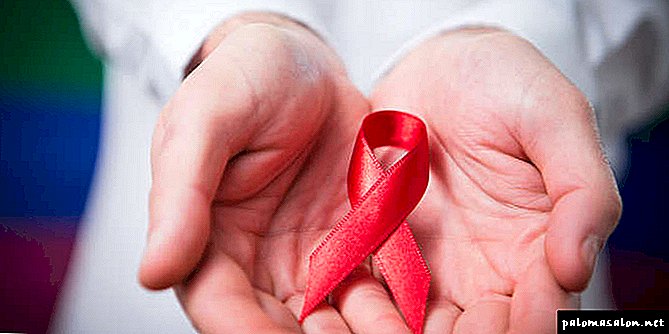
Due to the fact that parasites feed on blood, people believe that they can spread the immunodeficiency virus and cause AIDS. This is a fallacy: even if the insect feeds on the blood of an infected person and then moves to a healthy person, it will not be able to transmit HIV and cause infection by the “plague of the 20th and 21st centuries”.
This is due to the peculiarity of the activity of lice: when ingested by an arthropod, the blood is processed in its gastrointestinal tract, the virus is broken down by GIT enzymes. The blood remaining on the insect's mouth apparatus is cleaned with a special mucus (analogous to saliva).
Thus, bloodsuckers manage to get rid of the pathogenic virus for people, and by the time of the next bite there is no longer a pathogen. This also applies to hepatitis - lice can not be carriers of this disease. Not a single case of transmission to humans or of the hepatitis virus by arthropods has yet been reported.
However, parasites are carriers of other genital diseases. In particular, head lice can transmit:
Therefore, you should carefully choose your sexual partner. Ideally, in intimate places does not grow hair - parasites can not live on bare skin.
As stated above, the best way to protect malicious insects is to prevent infection at all. More information about preventive measures against lice can be found in the article: "Prevention of head lice: how to protect yourself from the appearance of lice and nits?"
In the issue of lice every person should be careful: it is important to understand that bloodsuckers pose a real danger to health. With this article, the reader will know what to expect from these insects.
Lice infection: is it dangerous for humans?
Given the small size of the insect, for its nutrition, a small amount of food (blood) is required, so blood loss is not significant.
Permanent bites are more damaging. On the head of a person there may be a large population of insects, which means that the scalp is exposed every day to several dozen, or even hundreds of bites. Each bite provokes severe itching, the person reacting to the stimulus begins to scratch his head intensely.
Which leads to scratches, microtraumas and mechanical damage to the scalp.
Consequences of mechanical damage to the skin on the head
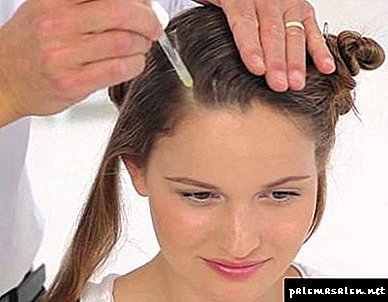 With constant scratching of the scalp scratches are formed, these are open wounds that can get into any infection brought from dirty hands and nails:
With constant scratching of the scalp scratches are formed, these are open wounds that can get into any infection brought from dirty hands and nails:
- streptococcus,
- single suppurations
- pyoderma (multiple suppurations),
- impetigo (purulent blistering rash).
For the treatment of such effects will require a complex of medical procedures and a long period of time.
After extensive suppurations, scars and scars may form on the scalp. In these places, hair follicles are destroyed and hair does not grow at the site of a scar. Also, multiple suppurations can trigger partial baldness.
If lice or their larvae (nits) are detected, treatment should be started immediately.
The main task in the treatment of pediculosis is not only to destroy living individuals, but also to get rid of nits. After all, if at least one nit survives, re-infection or recurrence of the disease will occur.
Recurrent lice is dangerous in that it can provoke more complex consequences than primary lice. After lice, the scalp is very weak, there are injuries and scratches, re-infection can lead to the formation of extensive pustules in a complex form.
What diseases are these parasites vectors?
Not only that lice bring a lot of trouble and irritation, they are also carriers of various diseases. A large number of epidemics, many years ago, were associated precisely with these insects.
Because of the wars, unsanitary living conditions of the population and the lack of modern drugs, people not only became infected, but also died from such diseases as:
- typhus. Provokes the bacterium Rickettsia.
 The louse, drinking the blood of the carrier of the infection (a person who is already sick with typhus), carries the bacterium in itself for 6-7 days.
The louse, drinking the blood of the carrier of the infection (a person who is already sick with typhus), carries the bacterium in itself for 6-7 days.
Together with feces, Rickettsia leaves the insect on the surface of the human scalp. At the next scratching of the scalp, this bacterium can get into the wound, from there into the human blood, and so the infection occurs.
The incubation period for typhus is 10-14 days.
Symptoms:
- a sharp rise in temperature to 38-39 degrees,
- dry skin is observed,
- conjunctivitis appears in the eyes,
- vessels become fragile and weak, internal hemorrhages appear,
- on the sixth day there is a severe rash all over the body,
- the perception of the surrounding world is disturbed: memory deteriorates, speech is incoherent, hallucinations appear.
The incubation period of the disease lasts from 7 to 14 days.
Symptoms:
- high temperature
- insomnia,
- weakness,
- fragility of vessels,
- yellowness of the skin,
- loose stools (diarrhea) with mucus.
The disease manifests itself in periods: deterioration immediately occurs, after some period there is a temporary improvement, after which the disease returns. Because of such a feature, this typhoid is called returnable. It can be diagnosed at the earliest possible dates with the help of blood and urine tests.  Quintan. Provokes bacteria from the genus rickettsia.
Quintan. Provokes bacteria from the genus rickettsia.
The symptoms and course of the disease are very similar to typhus, but the disease is milder, it is not fatal, but the healing process takes a very long period of time.
For a full recovery of health, a person may need several years. Volyn fever is diagnosed by blood and urine analysis.
The treatment of all three diseases that are caused by lice occurs with an antibiotic. Nowadays, these diseases are very rare, but the risk of infection still exists.
Do they suffer from AIDS and hepatitis?
Since AIDS and hepatitis can be infected through blood, people treat bloodsucking insects very wary.
But you should not worry, neither lice, nor mosquitoes, nor fleas, nor ticks can bear such diseases.
AIDS and hepatitis is provoked by viruses. The AIDS virus is introduced into the cells of the human immune system, and the hepatitis virus - into the liver cells.
In the blood of a sick person, these viruses are present, but parasites cannot be carriers of these diseases.
As soon as the virions (active particles of the virus) get together with the infected blood into the insect's alimentary canal, they are immediately split by enzymes and cease to exist.
In the mouth of the parasite, the virus also cannot last long. Lice periodically secretes mucus, similar to saliva and mouth, every 20-30 minutes washed by this mucus.
And since the gap between insect bites is 4-5 hours, the risk of infection is reduced to zero.
How not to catch head lice or typhus: preventive measures
In order to protect themselves and loved ones from the effects of pediculosis, it is necessary to take a number of preventive measures:
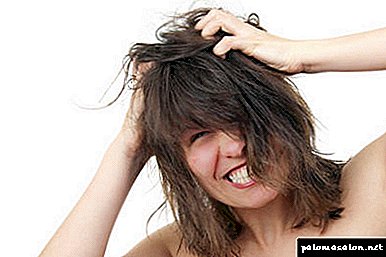 After the course of treatment, it is necessary to examine the scalp daily for lice and nits for 10-14 days.
After the course of treatment, it is necessary to examine the scalp daily for lice and nits for 10-14 days.- Treat the living space with special products.
- Wash clothes and bedding, as well as be sure to iron everything on both sides with an iron.
- During treatment, do not comb the scalp.
- Rinse the scalp daily with healing herbal decoctions (chamomile, burst, nettle, etc.).
- Always remember that re-infection with head lice can occur at any time, so do not use other people's combs, hair ties, hats, towels and bed linen. And also in places of large concentrations of people to collect long hair in their hair.
As soon as lice and nits are detected, treatment should begin immediately, and when any symptoms described above (temperature, weakness, etc.) appear, you should be tested for the infection as soon as possible.
Pediculosis: what is it
 Pediculosis refers to skin diseases. The louse is the causative agent - small insect, parasitic on the skin and clothes. Head lice feed on blood. Breed insects eggs by attachments their to the hair. Adults lice don't jump as well crawling.
Pediculosis refers to skin diseases. The louse is the causative agent - small insect, parasitic on the skin and clothes. Head lice feed on blood. Breed insects eggs by attachments their to the hair. Adults lice don't jump as well crawling.
Once they get to the hairline potential victim then are starting quickly multiplyputting off the nits. They attach them to the hair host using chitin. Per day may be postponedup to a dozen eggs. Live lice no more than 1 month.Pediculosis is always accompanied by strong itching, scratching in places of bites with the formation of wounds and crusts.
The diagnosis is made on the basis of inspection patient: scalp, pubic area, clothing.Treatment diseases provides for shaving hair holding treatment of affected areas body and head with special means disinfection underwear linen and clothes. According to official figures about 3% of the population suffer from pediculosis in Russia. But the real percentage of damage is ten times more, because not all cases infection are amenable to publicity.
From infection nobody is insured despite the fact that most often the disease affectscontingent leading asocial lifestyle.Baby may get infected pediculosis when visiting kindergarten or educational institution. In this case treatment should begin immediately and report outbreak in the children's team of teachers.
Types of pediculosis
 There are the following types of pediculosis.
There are the following types of pediculosis.
- Head. Pathogens - head lice. Representatives of this species noticeable to the naked eye. Must pass minimum 15 daysso that nit turned into a louse. For this parasites suck blood every 2-3 daysbut canfast up to 10 days. Itchy seals at the bite site due to the fact that the insect leaves saliva in the wound. This kind of disease is transmitted more often through personal itemsduring contact with the pillow on which the infected person was sleeping.
Wardrobe lice. Pathogens - body licereaching in size 5 mm. These insects lay their nits on underwear and clothes human in the seams and areas of tight fit to the skin. In this case, there is lesion of neck, back, shoulders - where clothes come into contact with the body. In the field of bites long lasting lice skin is colored blue.
All listed species are characterized extremely unpleasant symptoms. Regardless of the source of infection It is important to start treatment on time.
What carriers of diseases are lice
 Head lice are carriers such diseases, as typhus and recurrent typhus, as well as Volyn fever. Themselves insect bites are not dangerous:infectionpossibly at pressure on the parasite, by getting an infection on damaged skin. Nitka does not represent any danger.
Head lice are carriers such diseases, as typhus and recurrent typhus, as well as Volyn fever. Themselves insect bites are not dangerous:infectionpossibly at pressure on the parasite, by getting an infection on damaged skin. Nitka does not represent any danger.
For of all types of typhoid is characteristic acute diseasewith possible fatal and weak immune response of the body. Fever, though not a fatal disease, is very unpleasant. In most cases carriers dangerous infections are exactly body lice. Diseases like AIDS and hepatitis, lice do not tolerate contrary to the prevailing opinion.
Is it possible to die from pediculosis?
Pediculosis is an extremely unpleasant disease, but not fatal. Lice breeding on the skin does not lead to death.You can die from infectionscarried by these insects.
So at least acute form typhus lasts no more than a week, possibly occurrencesevere complications:
- nervous disorders
- thrombosis,
- pathology of the circulatory system.
Death is coming as a result pulmonary artery blockage. Against typhus developed byvaccinewhich protects a person for a few years. By her vaccinate all children and adults at risk.
What doctor treats
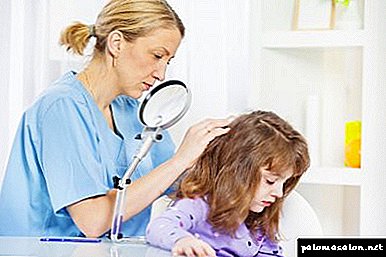 More often pediculosis is self-treatingusing specially intended for this funds. But a situation may arise when it is necessary to consult a doctor. This dermatolo treats the diseaseg, specializing in pathologies of the skin.
More often pediculosis is self-treatingusing specially intended for this funds. But a situation may arise when it is necessary to consult a doctor. This dermatolo treats the diseaseg, specializing in pathologies of the skin.
If you cannot consult a dermatologist, it’s worth consult a therapist — He will correctly select the drugs. When lice are found in a childappropriate visit pediatrician to receive the appropriate treatment. So that the medical care provided has a faster result, the doctor must be contacted immediately after the appearance of the first alarming symptoms.
Doctortreating pediculosis in his practice uses special preparations for the destruction of parasites. The pharmacy can be purchased various lice products, allowing you to safely get rid of the disease. When lesions of the pubic region, armpits or beards, doctors recommend remove hair from these zones. Prevention pediculosis is the timely detection and treatment infected as well respect personal norms hygiene.
Consequences, complications
 Insofar as pediculosisrefers to dangerous diseasesIt should be treated as soon as possible, minimizing the risk of new outbreaks. Head lice not so easy cause a lot of inconvenience their bites: they were and remain carriers of dangerous diseasesdifficult to treat and fatal.
Insofar as pediculosisrefers to dangerous diseasesIt should be treated as soon as possible, minimizing the risk of new outbreaks. Head lice not so easy cause a lot of inconvenience their bites: they were and remain carriers of dangerous diseasesdifficult to treat and fatal.
Many sick ill tolerate itching from biting combing them and causing yourself microtrauma.As a result of hitting particles dust and excrement crushed insect wound can get infected and in the aftermathfester. After solving the problem with pediculosis will have to be treated still skin inflammation.
Wherein it turns out negative Influence at functioning CNS with such the consequences as acute psychosis. Even if a pediculosis infection occurred in an area where typhoid fever is not registered, there is still a danger of infection: lice constantly migrate in search of food. Infected lice is typhoid OK persists for a long timeso start fight with parasites detected need immediately.
Conclusion
Pediculosis pathogens act insects - lice. Start off fight with parasites need as soon as they are detected, insofar as entered parasite infection can be fatal.
Pediculosis, its danger to humans
It is widely believed that head lice is a disease of untidy people who follow poor hygiene rules. The opinion of several decades is already erroneous. Everyone can get sick: will it happen in nature, in public transport, other places.
The risk of lice infestation is most likely in the fall. Children returning to school, a disease that spreads from one to another in a matter of days erupts.
The most common infection is head lice. This happens due to non-compliance with the rules of hygiene or while swimming in the pools. Getting into trouble is easy when using bed linen issued in trains, hotels.

Regardless of the mode of appearance, you need to know that infection lice are a health hazard.
Insects, feeding on blood, make wounds, thus provoking the appearance of infections. If they are not infected, then the patient himself often combs the bite sites, causing the pathogens to wound. In these places, various dermatitis develops, pustules form.
Through them through the lymph nodes, fatty tissue, microbes penetrate inside. Abscesses are formed, boils appear. There are cases when it is impossible to avoid surgical intervention.
The hair of an infected person becomes dull, poorly combed. If pediculosis and purulent inflammations on the head are not cured in a timely manner, pyoderma will develop - a general purulent skin lesion.
Phyriasis or pubic lice
Pubic lice never live on the head. Their habitat is a triangular hairline and pubic hair, the same underarm structure on the chest.
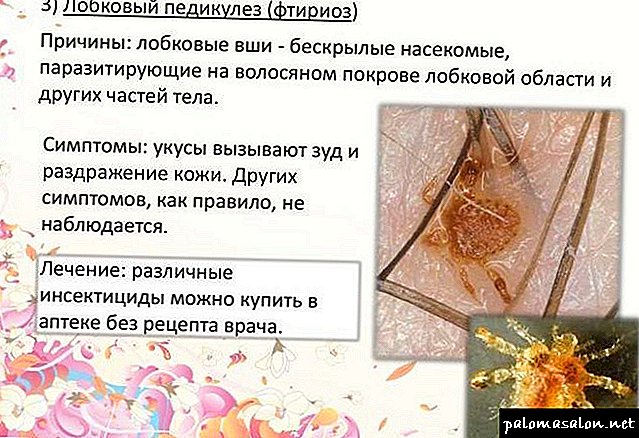
Severe itching caused by them is not the last problem. Pubic louse is a dangerous species that can survive in extreme conditions: in the water for almost 2 days, in the sand at a depth of 30 cm - 4 days.
These insects, sexually transmitted, are carriers of diseases of the genital organs. It is known what diseases are transmitted through open wounds formed by lice bites. It:
Now pubic lice are found in much smaller quantities, because the sexual hygiene of modern people has improved.
Body lice and its health hazards
They prefer to live in woolen, cotton fabrics.
This type of lice is the most dangerous because it spreads pathogens that cause different types of typhoid, as well as trench and Volyn fever. Nowadays, the probability of occurrence of these diseases is negligible, but it is impossible to exclude their occurrence.
When infected, purulent inflammations can appear, they leave ugly scars on the skin without prompt treatment.
Such diseases often appear:
- chronic lice. Late treatment leads to the fact that the disease becomes chronic,
- infectious diseases spread by insects through the waste of their life,
- inflammation, allergies - in advanced cases, lice are the causative agents of infectious diseases of the eye, furunculosis, allergic reactions,
- change in pigmentation, the appearance of coarse growths on the skin.
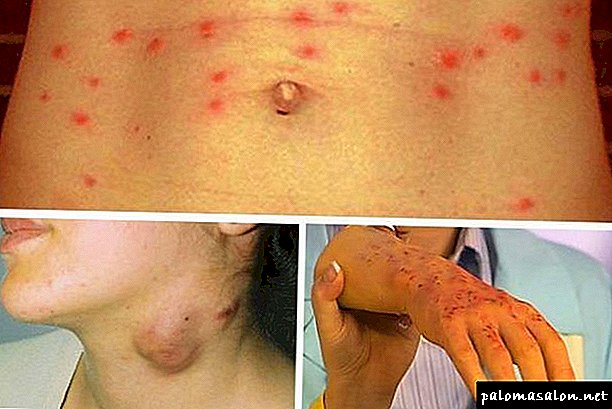
Symptoms of Pediculosis
The effects of pediculosis are unpleasant and dangerous for any person, but the greatest threat exists for children whose immunity has not yet been fully formed. Therefore, it is important to be able to identify the symptoms of the disease.
The presence of lice can be determined by the following features:
- itchy nodules, spots appear, they are easy to see with a simple examination,
- spots of a bluish tinge on the stomach, formed by hemoglobin of the blood under the influence of an enzyme secreted by lice when bitten,
- small red spots on underwear (excrement excreted by lice),
- the appearance of ulcers, peeling of the skin, the appearance of dandruff,
- small pustules - a consequence of infection, insects with bites, combing, transmit it,
- itching of the abdomen, buttocks, shoulders, the appearance of acne with a diameter of up to 4 mm speaks about the development of body lice,
- the patient with pediculosis becomes irritable, his appetite disappears,
- body temperature sometimes rises to 37.5 degrees, there are swelling of the lymph nodes, caused by infection, entered into the combed places.

How to get rid of pediculosis?
- disinsection by special means,
- washing in hot water, drying in the sun underwear and bed linen,
- hair coloring can destroy lice, nits due to the chemical composition of the paint,
- mechanical way.
Daily, several times a day, comb lice and nits using a frequent comb or comb. To facilitate the procedure using special shampoos, they do not fight with parasites, but contribute to their detachment from the hair.

Preventive measures
Despite the fact that modern drugs successfully cope with all types of blood-sucking insects, the danger of re-infection can not be excluded. Therefore, it is necessary to take preventive measures to prevent the recurrence of the disease. These include:
- daily inspection of the head, checking the presence of lice, nits,
- compulsory ironing of clean linen, its frequent change,
- wash at high temperature
- treatment of residential premises with insecticides that destroy bugs and their larvae,
- after washing, rinse the hair with a solution of vinegar,
- drying hair after washing with hot air (hair dryer), it kills nits,
- in places where there are a lot of people, from long hair to collect a tail or to braid a braid,
- applying lavender oil or tea tree on the ears, on the back of the head (to prevent lice from getting on the hair),
- to achieve the effect should consult with a dermatologist, he will give the right advice.
Observing preventive measures and hygiene rules, everyone will be able to avoid lice infestation, and, therefore, to protect themselves from the unpleasant, dangerous effects of pediculosis. Louse is a disease carrier.
Complications
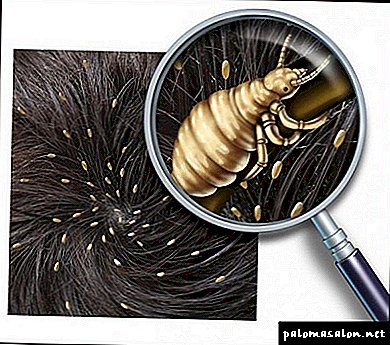 What are dangerous lice for a person on his head? Lice feed on human blood up to four times a day, while on the head can live several dozen insects.
What are dangerous lice for a person on his head? Lice feed on human blood up to four times a day, while on the head can live several dozen insects.
For more information about the types of lice, how to breed, as well as the incubation period, read on our website.
According to these data, it is easy to calculate that during the day the head is exposed to tens and hundreds of bites, each of which, although microscopic, but together they have a significant effect on the skin and irritate it.
During a bite, lice inject an enzyme into the wound that prevents blood from clotting., subsequently, it causes such a symptom of the disease as severe itching, which cannot be quenched by constant scratching of the head.
With frequent scratching, there is a high chance that dirt and harmful bacteria from the hands and nails can be placed in the wounds, after which it will penetrate the skin and cause suppuration. A large number of such ulcers can cause negative systemic reactions of the body, such as fever and inflammation of the lymph nodes.
What is dangerous pediculosis? If not treated single suppuration, sooner or later they will develop into pyoderma - general purulent skin lesion. Pyoderma eventually flows into impetigo, which is characterized by the appearance of a purulent purulent rash, indicating that streptococcus affects the skin.
 These are extremely unpleasant diseases, their treatment requires serious medical intervention and the adoption of strong medicines. To avoid the occurrence of such pathologies, you need to remove the lice quickly and decisively: only in this case, the itch will not bother you, and therefore the probability of infection will be minimal.
These are extremely unpleasant diseases, their treatment requires serious medical intervention and the adoption of strong medicines. To avoid the occurrence of such pathologies, you need to remove the lice quickly and decisively: only in this case, the itch will not bother you, and therefore the probability of infection will be minimal.
Superficial treatment of pediculosis will not give proper results. If nits remain on the head, they will later develop into lice, and the parasites will continue to irritate the skin. Recurrences of pediculosis are harmful because the scalp, which has not yet recovered after the first infection, again faces this scourge and is damaged even more.
If between the relapses of the disease, the backs do not have time to heal, then the chance of their suppuration increases.
Tolerated diseases
What diseases do lice suffer? Until the middle of the last century many notorious infections were spread by licethat was associated with poor hygiene of the population, lack of antibiotics in the arsenal of medicine, poor conditions of life and constant military and economic shocks.
Today, cases of lice carrying such diseases are very rare and are recorded only in developing countries, but they will not be aware of the list.
Consider each infection in more detail.
Prevention
 To avoid complications of pediculosis, you should avoid the pediculosis itself: observe personal hygiene, regularly change and wash clothes, cover your head with a hat when visiting public places.
To avoid complications of pediculosis, you should avoid the pediculosis itself: observe personal hygiene, regularly change and wash clothes, cover your head with a hat when visiting public places.
But what if the lice are already settled in the head? Then you need to take measures that will not allow pediculosis to develop into more severe forms.
First of all, wash your hair regularlyso that the dirt from the hair and skin does not contribute to the suppuration of wounds. Secondly, try to scratch your skin as little as possible, and if it is impossible to tolerate itching, take an antihistamine medicine.
Thirdly, watch your health carefully, if lice hit you in areas of increased risk of typhoid fever (southern areas), take blood and urine tests that can detect your infection. Fourth, try to get the necessary funds and remove the lice at the earliest opportunity, do not wait until they actively breed on your head.

 After the course of treatment, it is necessary to examine the scalp daily for lice and nits for 10-14 days.
After the course of treatment, it is necessary to examine the scalp daily for lice and nits for 10-14 days.

